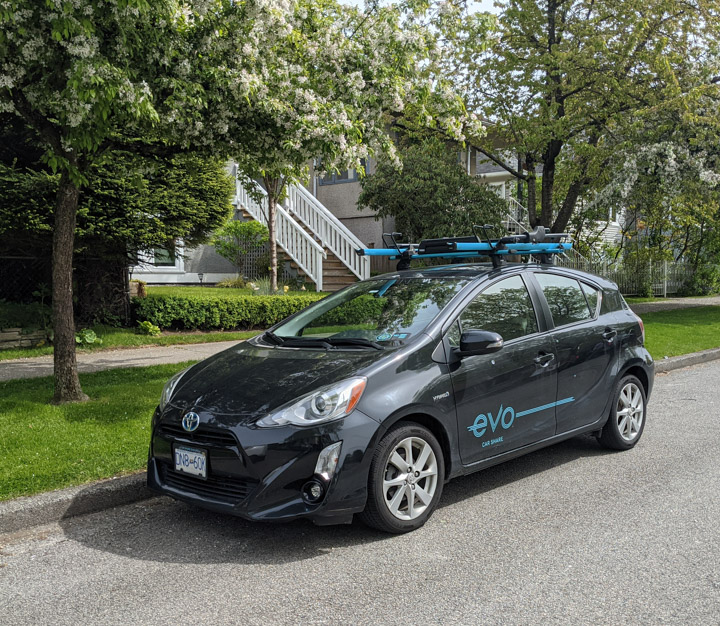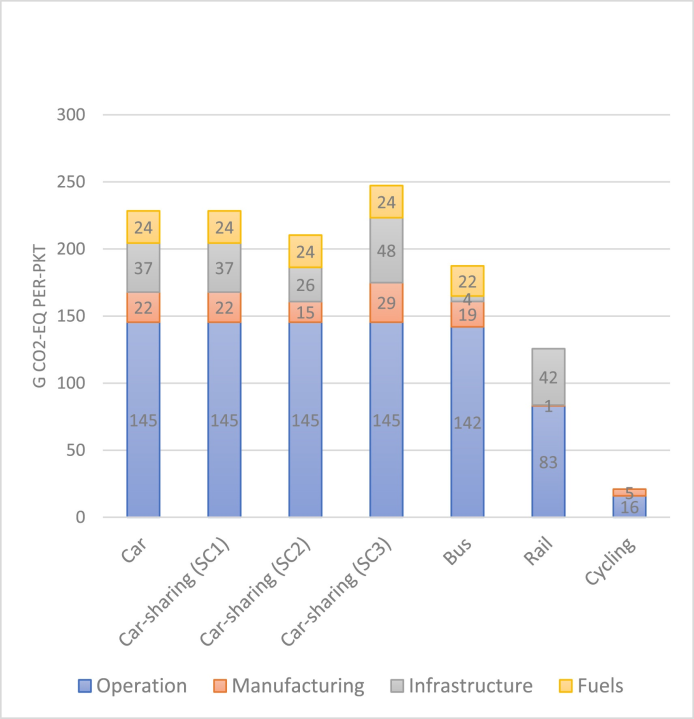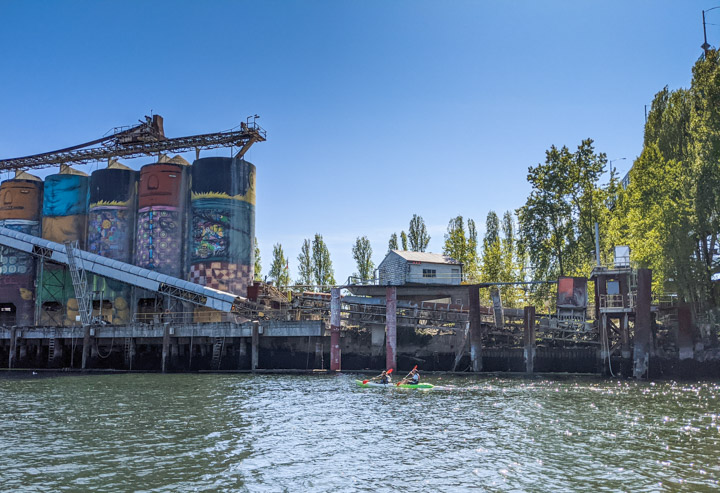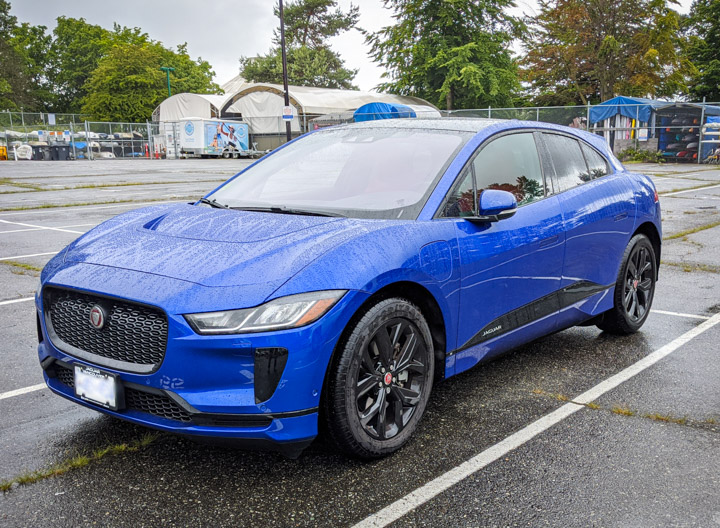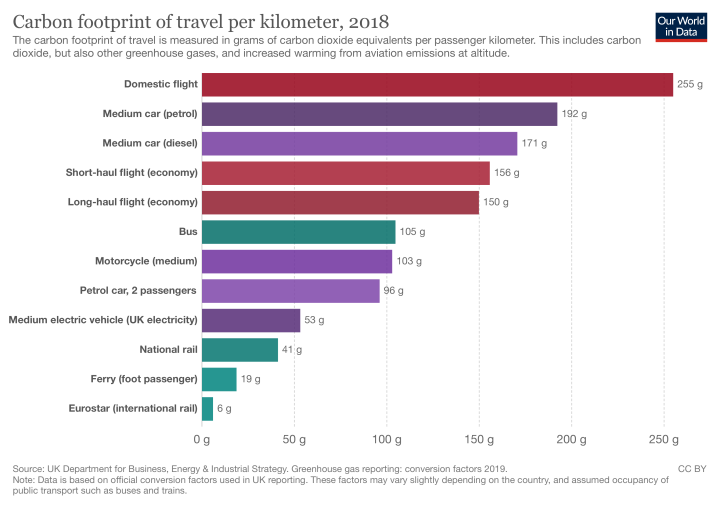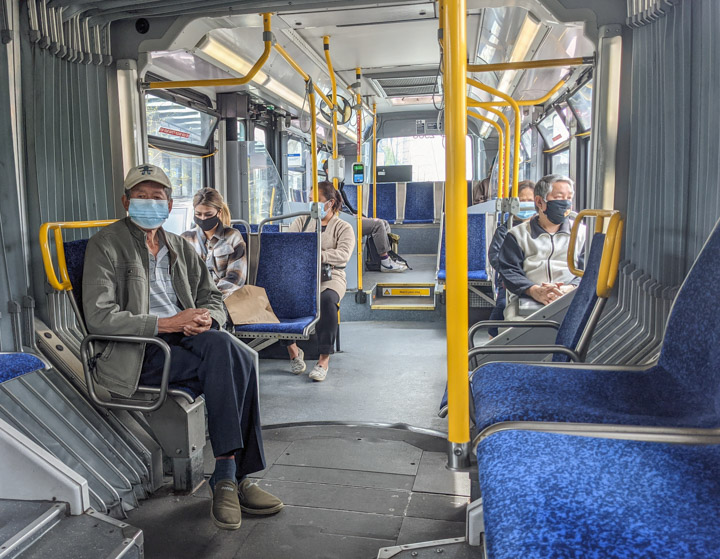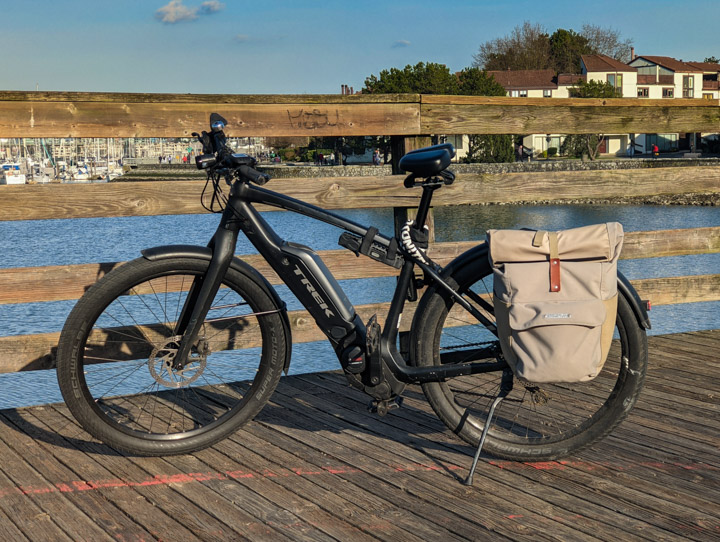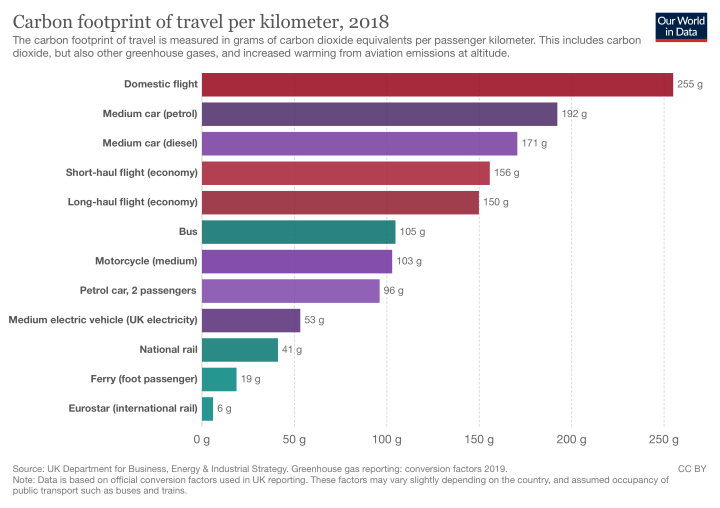
My Wednesday consisted mostly of running around and moving things. I used five transport modes and now I can’t not think about environmental impact and practicality and urban futures. Hop on board the car-share, boat, electric car, bus, and bike, and come along for the ride.
Background · What happened was, on Wednesday morning our boat was at the boatyard for a minor repair. They’d squeezed me in on the condition that I show up at 8AM to sail it away — they’re pretty well maxed out this time of year when everyone wants to get back on the water. Simultaneously, following on my recent bike accident, my bike was stuck in the repair shop — also maxed out in spring — because the replacement pedals they’d ordered were defective and the nearest available pair were in an indie bike shop in a distant suburb.
So, here’s what I did.
Got up early and took a car-share which was just outside my house down to Granville Island, where the boatyard is.
Putt-putted the boat over to my spot at the marina, hung out there for a while while I cleaned up the boat, put it into office mode, and did a bit of work.
Walked twenty minutes to the nearest car-share and took that home.
Took the electric car 32km from central Vancouver to Cap’s South Shore Cycle in Delta, picked up the necessary bike part, came back to Vancouver to drop it off at the local bike repair that was working on my bike, then went home for lunch.
When the shop texted me that they were done, took a handy local bus eight stops or so starting four blocks from my house and getting off around the corner from the bike shop.
Biked home!
Now let’s consider the experience and the economics.
Car Share · There’s been a lot of churn in this market over the years, with Zipcar and Car2Go and so on; it may or may not be a thing where you are. Here in Vancouver it’s alive and well under the Evo brand. You pick up the one that’s nearest and drop it off at your destination. There’s a mobile app, obviously.
They’re all Toyota Prii and thus pretty energy-efficient. Also, since a significant part of an automobile’s carbon load comes from manufacturing, when you provide more trips with fewer cars, that should be a win.
Having said that, the carbon-load impact story is mixed. The reason is that they’re so damn convenient that they end up replacing, not solo car trips, but public-transit and bike trips. I can testify to that; when I was working downtown at Amazon, mornings when the weather was crappy or I wasn’t feeling 100%, I regularly yielded to the temptation to car-share rather than bike or take the train. On the other hand, we have friends who don’t own a car but probably would were it not for car-share availability.
Anyhow, it’s beastly complicated. Does car sharing reduce greenhouse gas emissions? Assessing the modal shift and lifetime shift rebound effects from a life cycle perspective dives deep on this. Big questions: What kind of trips is the car-share displacing, and do the vehicles wear out faster than individually-owned cars? The image is from that paper linked above.
Emission factors for three car-share scenarios. The Y access is equivalent grams of CO2 per passenger-kilometre travelled.
My big gripe with the study is that in my experience, the kind of car offered by car-shares is quite a bit more efficient than the average proprietary car on the road. I’m also puzzled at the low carbon cost assigned to manufacturing; I had thought it closer to 50% from previous readings. No matter how you cut it, though, it’s not simple.
Boating · OMG forgive me, Mother Earth, for I have sinned. When we’re trundling along at 20+ knots to the cabin with weekend supplies, we get 1 km/litre, maybe 1.1. (It’s only 30km.) On the other hand, there’s this.
Shot while heading over to the boatyard a couple of days ago. It’s awfully nice to be out in a boat.
I console myself with the fact that this is the only petroleum-burning object in our possession; even our house heating and cooking is electric now. But still. There is hope; innovators all over the world are trying to figure out how to make boating less egregiously wasteful. For example, consider the lovely Candela boats, which combine modern battery technology with hydrofoils to get all that fiberglass up out of the water. They’re not the only ones; other manufacturers, mostly in Europe, are trying to get the right combination of range, performance, and carrying capacity. I sincerely hope to be able to buy such a thing in the boating years that remain to me.
But in my actual boat in the year 2021, it’s not good.
Driving (e-car) · I took another car-share Prius home (a long walk to get it, this time) and had time for a coffee before I fired up the electric car to go get bike parts.
I confess to having been all excited about this trip; it’s been a year or more since I’ve had the Jag out on the highway. Traffic was light and I may have driven a little too fast; actually cried out with joy as I vectored into the approaches to one of the Annacis Island bridges. The contrast to the friendly-but-frumpy little Prius is stark.
Let’s look at another graph, from Which form of transport has the smallest carbon footprint?.
I encourage visiting the paper because this graphic is interactive, you can add lots more different travel modes.
Where I live the electricity is very green, but even with dirty coal-based power, battery cars are still way more carbon-efficient than the gas-driven flavor simply because turning fossil fuels into forward motion is so beastly inefficient. Still, considering manufacturing carbon cost, a single human in a heavy metal box is never going to be a really great choice, environmentally.
But wait: This is exactly the kind of errand cars exist for. There’s no good argument for decent public-transit service between residential Vancouver and a small store in a strip mall in a remote suburb. It’s too far to bike. The advantages of car-share, as we’ve seen, aren’t that overwhelming.
I once read a piece of analysis — sorry, can’t remember where — that suggested a future where lots of people still have cars, but that they are rarely used, mostly just sit there. Until, for example, you have to head off to fetch something from a distant suburb. That sounds plausible to me, partly because it describes our situation: We regularly get plaintive complaints from the Jag’s remote-control app saying that since we haven’t gone near it in days, it’s going into deep-sleep mode.
Busing · I generally don’t mind taking public transit, if only for the people-watching, except when there’s rush-hour compression.
Unfortunately, the carbon economics depend really a lot on how full your buses and trains are. To the extent that fossil-fuel shills have written deeply dishonest studies that I’m not gonna link to arguing that cars are more planet-friendly than buses unless the buses are really full all the time. In fact, in most places they’re full enough to make the carbon arithmetic come out ahead on carbon loading.
And there’s another subtle point: A successful public-transit system has to run some trains and buses at suboptimal loads because otherwise people won’t be able to depend on it to get around and will just go ahead and buy a car and then start driving everywhere.
And having said that, Covid is definitely not not helping; check out this picture I took on the bus today.
Vancouver’s #3 Main Street bus on a Wednesday afternoon in May 2021.
Biking · Anyhow, I finally, weeks after my accident, found myself back on my wonderful e-bike, heading home.
So far on this journey there’s been a whole lot of “It’s complicated.” No longer. Bikes’ carbon load is vanishingly small compared to any other way of traveling further than you want to walk. Plus they’re fun. Plus riding them is good for you. E-bikes hugely expand the range of situations where biking is an option for a non-young non-athletic person.
It’s not complicated. We need more bikes generally and more e-bikes specifically on the road, which means your city needs to invest in bike-lane infrastructure to make people safe and comfortable on two wheels.
如有侵权请联系:admin#unsafe.sh
